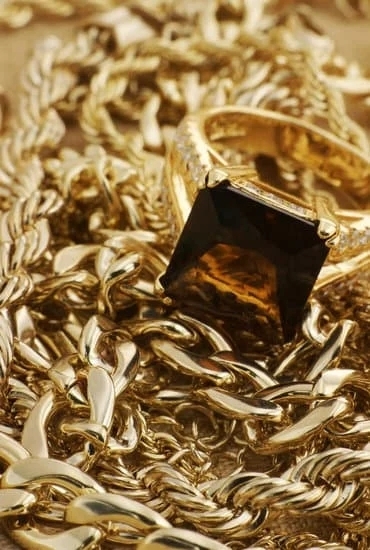The history of Native American Indian jewelry can be traced back for centuries, with a rich tradition of craftsmanship and cultural significance. From traditional materials and techniques to the symbolism and meaning behind the designs, Native American Indian jewelry has a deep-rooted connection to the culture and heritage of indigenous tribes.
This article seeks to explore the origins, evolution, and enduring legacy of Native American Indian jewelry, as well as the artists who have made significant contributions to this timeless art form.
Native American Indian jewelry encompasses a wide range of styles, from intricate silverwork to colorful beadwork, each reflecting the unique traditions and beliefs of different tribal communities. The use of natural materials such as turquoise, coral, and shells, combined with expert craftsmanship, has resulted in pieces that are celebrated not only as adornments but also as expressions of cultural identity.
Throughout this article, we will delve into the traditional materials and techniques used in Native American Indian jewelry making, as well as the symbolism and meaning behind these sacred adornments. We will also examine the evolving designs of Native American Indian jewelry over time, shedding light on its continued cultural significance in contemporary society. Join us on this journey through history and culture as we explore the enduring legacy of Native American Indian jewelry.
The Origins of Native American Indian Jewelry
Native American Indian jewelry holds a rich history that dates back centuries. The origins of Native American Indian jewelry are deeply rooted in the cultural and spiritual traditions of various indigenous tribes across North America. The art of jewelry making was passed down through generations, serving as a way to honor and connect with their ancestral roots.
Traditional Materials and Techniques Used in Native American Indian Jewelry Making
- Silver: One of the most commonly used materials in traditional Native American Indian jewelry making is silver. The Navajo tribe, in particular, is known for their exquisite silverwork, including intricate silver stamping and overlay techniques.
- Turquoise: Another highly prized material in Native American Indian jewelry is turquoise, revered for its vibrant blue color and spiritual significance. It is often set into silver to create stunning pieces of jewelry that reflect the natural beauty of the Southwest.
- Beadwork: Many tribes also utilize beadwork as a traditional technique in creating intricate designs on jewelry such as necklaces, bracelets, and earrings.
Symbolism and Meaning Behind Native American Indian Jewelry
The symbolism and meaning behind Native American Indian jewelry carry great significance, often reflecting the tribal heritage, spiritual beliefs, and connection to nature. Certain symbols such as feathers, animals, or geometric patterns hold specific meanings within different tribes, adding depth and storytelling to each piece.
The history of native american indian jewelry is a testament to the enduring creativity and craftsmanship of indigenous artisans who have preserved their cultural traditions through their unique art form.
Traditional Materials and Techniques Used in Native American Indian Jewelry Making
Native American Indian jewelry has a rich history dating back thousands of years, with traditional materials and techniques playing a significant role in the artistry and craftsmanship of each piece. The use of natural materials such as turquoise, silver, coral, and shells reflects the deep connection to the earth and the environment that is inherent in Native American culture.
Materials Used
One of the most iconic materials used in Native American Indian jewelry is turquoise, which has been highly valued for its vibrant blue-green color and spiritual significance. Silver is another essential material, often incorporated into intricate designs through techniques such as stamping, casting, and overlay. Coral and shells from various regions have also been historically used to create unique pieces that represent different tribal traditions.
Techniques Employed
The techniques employed in Native American Indian jewelry making have been passed down through generations, with each tribe developing their own distinct methods. One common technique is lapidary work, which involves shaping and polishing stones to be set into jewelry pieces. Metalworking methods such as soldering and forging are also utilized to create elaborate silver settings for stones. Additionally, beadwork is a fundamental technique that is often used to embellish jewelry items.
Significance of Traditional Materials and Techniques
The use of traditional materials and techniques in Native American Indian jewelry making reflects a commitment to preserving cultural heritage and ancestral knowledge. Each piece carries the collective wisdom of indigenous communities and serves as a tangible expression of their connection to the land. The mastery of these materials and techniques by skilled artisans has allowed for the creation of timeless jewelry pieces that continue to hold deep cultural significance within Native American communities today.
Symbolism and Meaning Behind Native American Indian Jewelry
The history of Native American Indian jewelry is rich with symbolism and meaning, making it a unique art form that holds deep cultural significance. For centuries, Native American tribes have used jewelry as a way to communicate their beliefs, heritage, and personal stories. Each piece of jewelry is carefully crafted with specific materials and designs that carry powerful symbolism.
Traditional Native American Indian jewelry is often made with natural materials such as turquoise, coral, shell, and silver. These materials are not only aesthetically beautiful but hold spiritual significance within the Native American culture. For example, turquoise is believed to bring protection and healing, while coral represents life and prosperity. The use of these materials in jewelry making reflects the connection between the natural world and the spiritual beliefs of the indigenous peoples.
In addition to the materials used, the designs of Native American Indian jewelry also hold deep symbolism. For example, many pieces feature intricate patterns or symbols that represent important aspects of tribal life such as nature, animals, or celestial bodies.
These designs serve as a way for individuals to connect with their heritage and express their identity within the community. Understanding the symbolism behind each piece of jewelry provides insight into the values and traditions of Native American tribes throughout history.
Evolution of Native American Indian Jewelry Designs
The evolution of Native American Indian jewelry designs is a testament to the rich cultural heritage and artistic traditions of indigenous peoples. What began as a practice rooted in symbolism and craftsmanship has transformed over time, reflecting changes in materials, techniques, and design influences.
Historically, Native American Indian jewelry was made using natural materials such as turquoise, coral, shells, and various types of metal. These materials were often handcrafted using traditional techniques such as stamping, beadwork, and inlay. The intricate designs and use of vibrant colors in early Native American Indian jewelry reflected the deep connection to nature and spiritual beliefs held by indigenous communities.
As contact with European settlers increased, trade brought new materials such as silver to Native American Indian artisans. This led to a fusion of traditional techniques with contemporary influences, resulting in the development of new styles and motifs. Additionally, the incorporation of symbols from other cultures further diversified the designs of Native American Indian jewelry.
Today, the evolution of Native American Indian jewelry designs continues to be influenced by modern trends and global fashion. Many contemporary Native American Indian artists are exploring innovative ways to preserve traditional techniques while also infusing their work with personal creativity and stylistic interpretations. The result is a diverse array of jewelry that honors the past while embracing the present.
Famous Native American Indian Jewelry Artists and Their Contributions
Native American Indian jewelry has a rich history and has been crafted by talented artisans for centuries. Some of the most famous Native American Indian jewelry artists have made significant contributions to the art form, preserving traditional techniques while also innovating new designs.
One such renowned artist is Charles Loloma, a Hopi jeweler known for his exceptional craftsmanship and bold, modern designs. His use of non-traditional materials such as gold and gemstones revolutionized Native American Indian jewelry making. Loloma’s work has been displayed in museums and galleries around the world, cementing his legacy as a trailblazer in the industry.
Another influential figure is Jesse Monogya, a Zuni jeweler celebrated for his intricate inlay work. Monogya’s pieces often feature delicate stone mosaics set in silver, showcasing the fine detail and precision that is characteristic of Zuni jewelry. His dedication to preserving traditional Zuni techniques has earned him widespread recognition within the Native American Indian jewelry community.
Additionally, Tommy Singer, a Navajo silversmith, became famous for his distinctive “chip inlay” style, incorporating crushed stones into silver to create stunning geometric patterns. Singer’s innovative approach to design and commitment to upholding Navajo traditions have solidified his reputation as a leading figure in the world of Native American Indian jewelry.
These artists and many others have played an essential role in shaping the history of Native American Indian jewelry, combining traditional methods with modern creativity to produce breathtaking works of art.
| Artist | Contribution |
|---|---|
| Charles Loloma | Revolutionized Native American Indian jewelry making with non-traditional materials such as gold and gemstones. |
| Jesse Monogya | Celebrated for intricate inlay work featuring delicate stone mosaics set in silver. |
| Tommy Singer | Famous for his distinctive “chip inlay” style using crushed stones into silver to create geometric patterns. |
Cultural Significance of Native American Indian Jewelry
Native American Indian jewelry holds a deep cultural significance that is connected to the spiritual and social practices of indigenous tribes. The history of Native American Indian jewelry dates back thousands of years and is intertwined with the traditions, beliefs, and rituals of various tribes across North America. This section will explore the cultural significance of Native American Indian jewelry, including its role in tribal customs and ceremonies.
- Connection to Spirituality: Native American Indian jewelry is often adorned with symbols and motifs that hold spiritual meaning for the wearer. These pieces are believed to offer protection, promote healing, and connect the wearer to their ancestors and natural surroundings.
- Expression of Identity: Jewelry has long been used by indigenous peoples as a way to express individual and tribal identities. Each piece of jewelry is a reflection of the wearer’s heritage, clan affiliation, and social standing within the community.
- Ceremonial Use: Many Native American Indian jewelry pieces are created specifically for use in ceremonies and rituals. These items are imbued with powerful symbolism and are an integral part of traditional ceremonies such as weddings, coming-of-age ceremonies, and spiritual gatherings.
The cultural significance of Native American Indian jewelry extends beyond mere ornamentation; it plays a vital role in preserving tribal heritage, fostering community ties, and transmitting traditional knowledge from one generation to the next. The unique designs, materials, and techniques used in creating these pieces reflect the rich cultural tapestry of Native American tribes throughout history.
Throughout the centuries, Native American Indian jewelry has remained an enduring symbol of tradition, spirituality, and artistic expression within indigenous communities. Today, contemporary Native American artists continue to honor their heritage while incorporating modern influences into their designs, ensuring that this timeless form of adornment continues to thrive for future generations to come.
Contemporary Native American Indian Jewelry Trends and Influences
Contemporary Native American Indian jewelry has seen a resurgence in popularity in recent years, with designers and artists finding new ways to incorporate traditional techniques and materials into modern pieces. One of the trends that has emerged is the blending of traditional Native American designs with other fashion styles, creating unique and innovative pieces that appeal to a wide range of consumers.
Influences from other cultures and art forms have also played a significant role in shaping contemporary Native American Indian jewelry. Many designers are drawing inspiration from global fashion trends, as well as incorporating elements from other indigenous cultures around the world. This cross-cultural exchange has resulted in a rich tapestry of designs that celebrate the diversity of Native American Indian artistry.
Additionally, contemporary Native American Indian jewelry is increasingly being recognized on the international stage, with many artists gaining prominence in the global fashion industry. This increased visibility has not only elevated the status of Native American Indian jewelry but has also provided opportunities for cultural exchange and collaboration between indigenous artists and designers from around the world.
The enduring legacy of Native American Indian jewelry continues to thrive through contemporary trends and influences, ensuring that this important art form remains an integral part of Native American culture while also embracing innovation and creativity.
| Contemporary Trends | Cultural Influences |
|---|---|
| Blending traditional designs with modern styles | Incorporating elements from other indigenous cultures |
| Increased recognition on the global stage | Drawing inspiration from global fashion trends |
Preservation and Revitalization of Native American Indian Jewelry Making Traditions
Native American Indian jewelry making traditions have been passed down through generations, with each piece carrying a distinct cultural and historical significance. However, with the influence of modernization and globalization, there has been a need to preserve and revitalize these traditional techniques and art forms. Efforts are being made to ensure that the history of Native American Indian jewelry is not lost and that the traditions continue to thrive.
Efforts in Preservation
Many organizations and individuals are dedicated to preserving the history of Native American Indian jewelry making. This includes museums that showcase historic pieces, as well as initiatives that support indigenous artisans in continuing their craft. By documenting and archiving traditional designs and techniques, these efforts contribute to maintaining a record of this rich cultural heritage.
Revitalization Through Education
One key aspect of preserving Native American Indian jewelry making traditions is through education. Workshops, apprenticeships, and educational programs are being established to pass on the skills and knowledge needed to create authentic pieces. By teaching younger generations about the history and significance of these art forms, there is hope for the continuation of these traditions.
Challenges in Revitalization
Despite ongoing efforts, there are challenges in revitalizing Native American Indian jewelry making traditions. These include issues such as cultural appropriation, environmental impact on sourcing materials, and economic factors affecting artisans’ ability to sustain their craft. Overcoming these obstacles is crucial in ensuring that this important part of indigenous culture remains alive for future generations.
Conclusion
In conclusion, the history of Native American Indian jewelry is a rich tapestry woven with tradition, symbolism, and cultural significance. From its origins as a form of personal adornment to its evolution into a highly sought after art form, Native American Indian jewelry has maintained its enduring legacy throughout the centuries. The traditional materials and techniques used in jewelry making have been passed down through generations, preserving the art form and keeping it alive in contemporary times.
The symbolism and meaning behind Native American Indian jewelry cannot be understated. Each piece tells a story, whether it’s a symbol of protection, love, or spirituality. The evolution of designs over time reflects the changing times while still honoring the roots of this ancient craft. Famous Native American Indian jewelry artists have made invaluable contributions to the art world, elevating traditional techniques and materials into modern masterpieces.
The cultural significance of Native American Indian jewelry goes beyond mere aesthetics – it is a reflection of heritage, identity, and pride. As contemporary trends and influences continue to shape the industry, there is a growing emphasis on preserving and revitalizing the traditions of jewelry making among Native American communities. It is crucial to honor the past while embracing innovation for future generations to continue cherishing the unparalleled beauty and significance of Native American Indian jewelry.
Frequently Asked Questions
What Is the Oldest Native American Jewelry?
The oldest Native American jewelry dates back to prehistoric times, with evidence of shell beads and stone pendants being worn as early as 8800 BC. These ancient pieces reflect the artistry and craftsmanship of indigenous peoples.
What Native American Tribes Are Known for Jewelry?
Various Native American tribes are known for their distinctive jewelry styles. The Navajo, Zuni, Hopi, Pueblo, and Santo Domingo tribes are particularly renowned for their intricate silverwork, turquoise inlay, and use of traditional symbols in their jewelry.
When Did Native Americans Start Signing Their Jewelry?
Native Americans began signing their jewelry in the early 20th century as a way to assert their identity and protect their designs from being copied by non-Native artisans. By signing their work, artists could establish ownership and authenticity within the growing market for Native American jewelry.

Welcome to my jewelry blog! My name is Sarah and I am the owner of this blog.
I love making jewelry and sharing my creations with others.
So whether you’re someone who loves wearing jewelry yourself or simply enjoys learning about it, be sure to check out my blog for insightful posts on everything related to this exciting topic!





